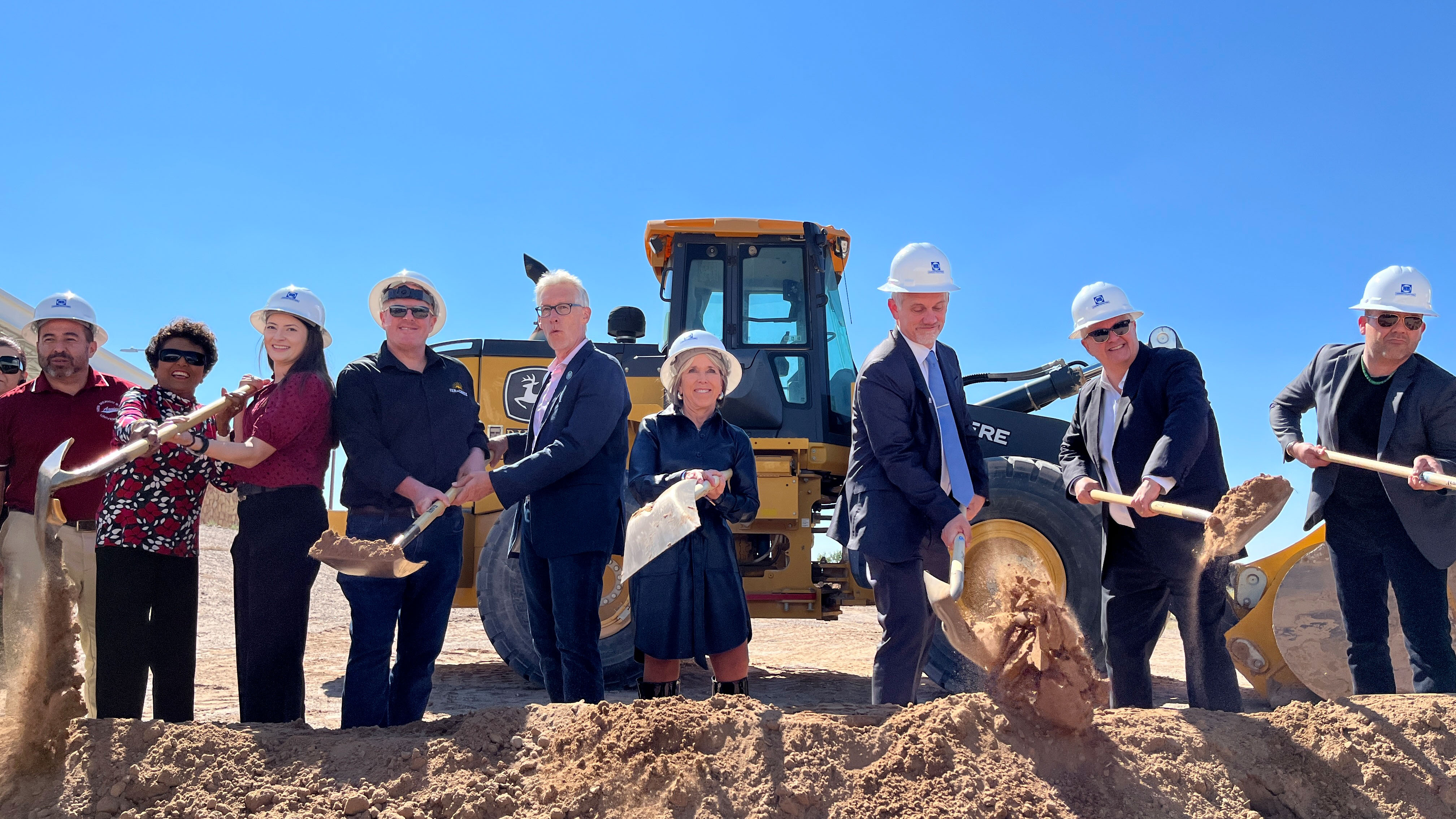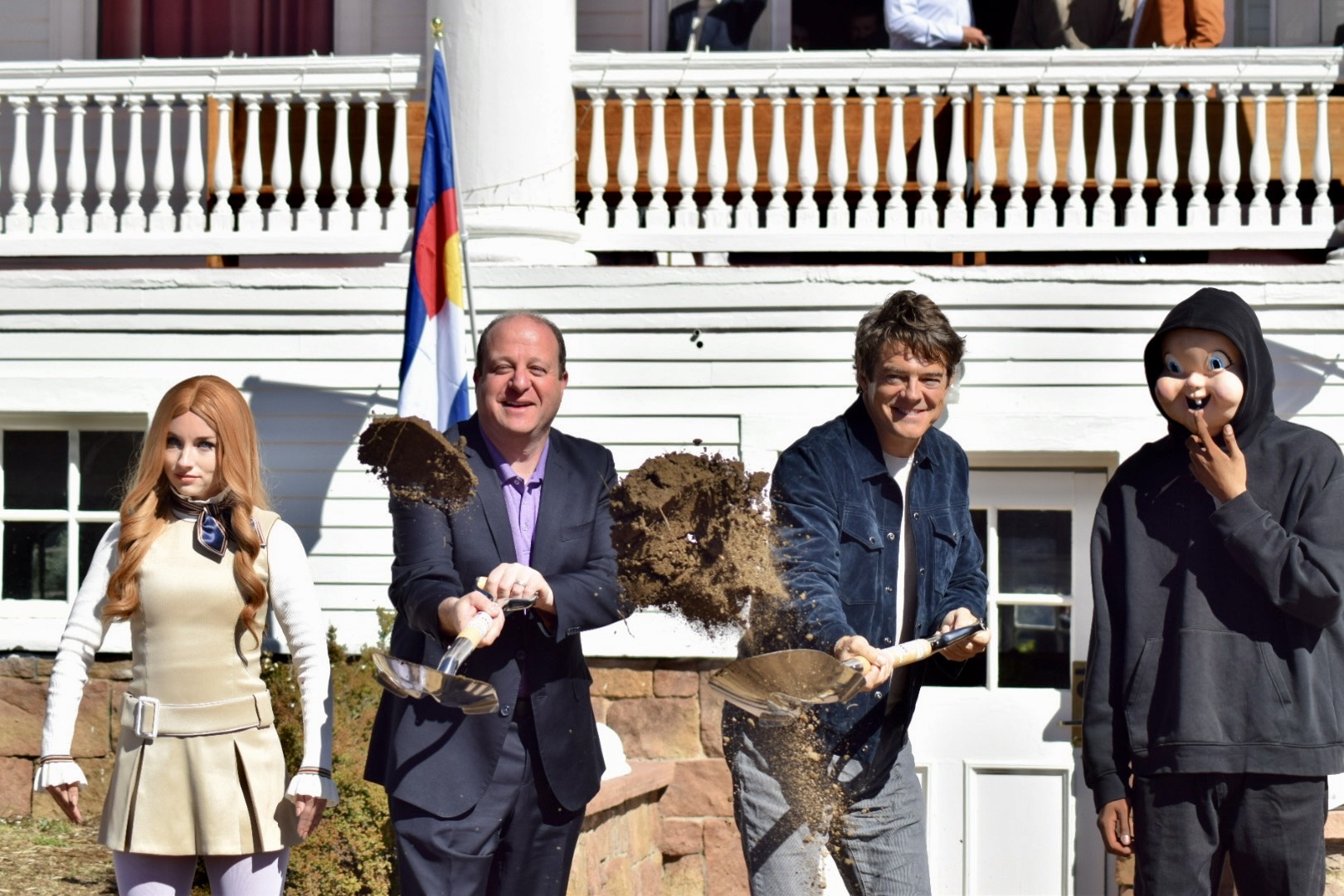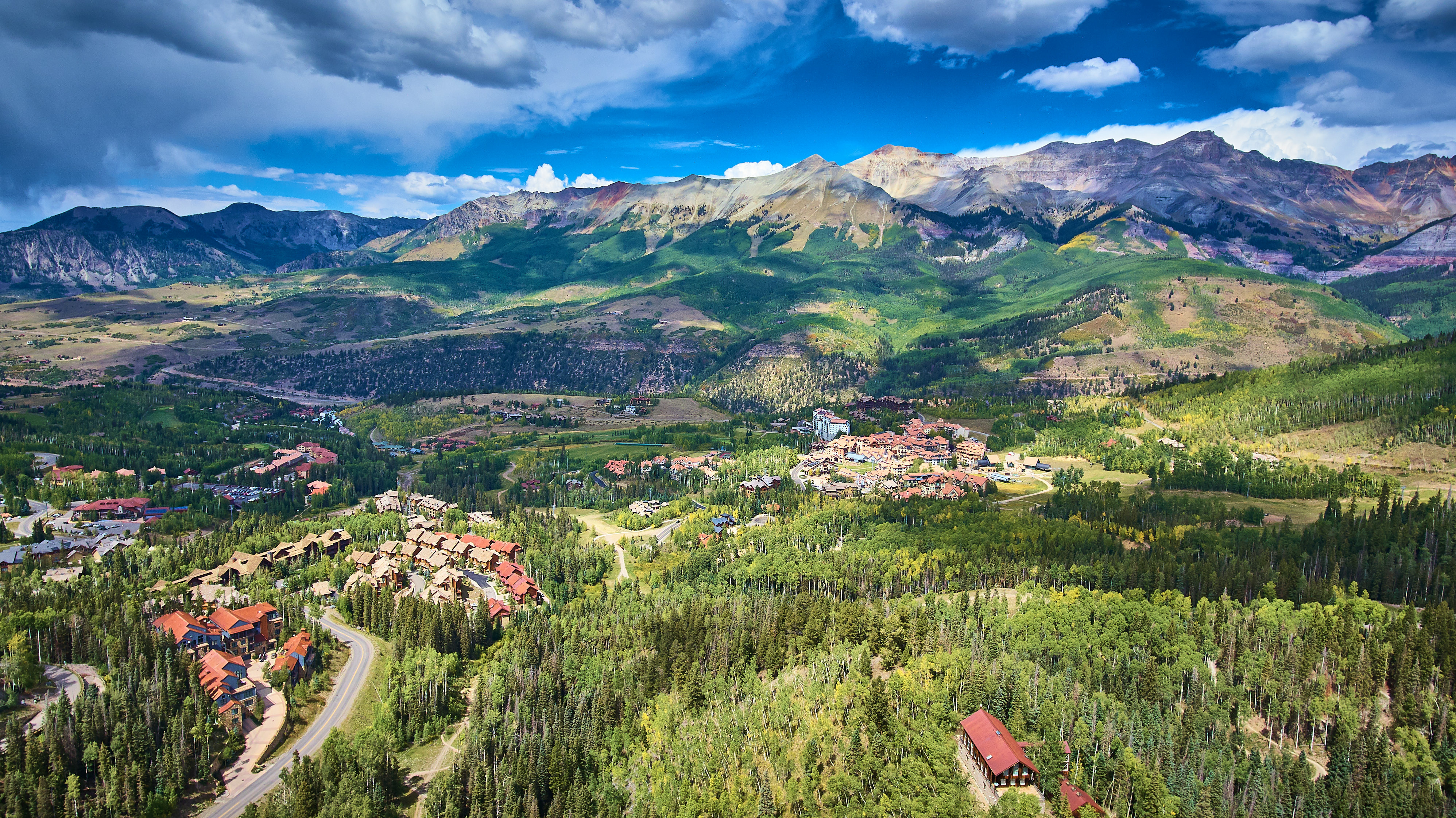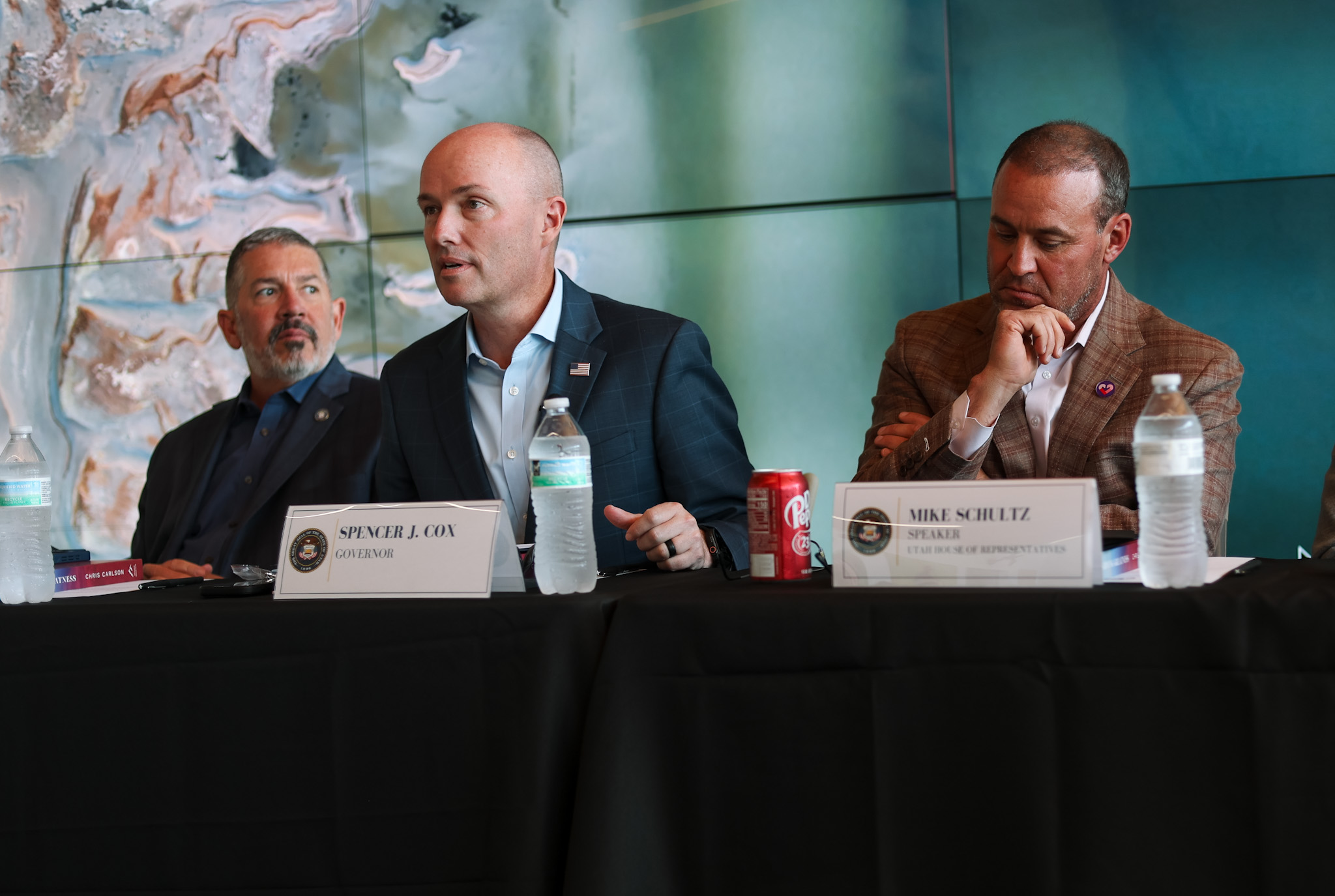10/09/25
Best of the West: Growing the film industry in the West; Workforce summit; Lifeline for the Great Salt Lake; Crucial geothermal test; and the best states for hiking
.png)
The Western Governors' Association keeps you updated on the latest news in the West. Here are the top stories for the week starting October 6, 2025. (Photos courtesy of Adobe Stock Images, the Office of New Mexico Governor Michelle Lujan Grisham, the Office of Colorado Governor Jared Polis, and the Office of Utah Governor Spencer Cox).
The West has long been dominant in the film industry, from the global production epicenter in Hollywood to crucial launchpads for independent films like Sundance and South by Southwest. Western landscapes provide the setting for iconic movies, and our region helps influence the world through TV and film.
Western states are eager to grow their film industries, and Governors around the West are helping expand the industry and bring it to new corners of the region.
The Golden State remains at the heart of the film industry in the U.S. and around the world. Roughly a third of all employees working in film work in California, and the entertainment business drives hundreds of billions of dollars in the state’s economy.
To ensure continued growth in California’s film industry, Governor Gavin Newsom recently announced that the state would more than double the Film and Television Tax Credit Program, from $330 million to $750 million.
The tax credit will help support the state’s film industry by boosting production, augmenting workforce training programs, and other incentives. In past years, every dollar awarded under the tax credit saw a $24.40 return in economic output and $16.14 return in GDP.
Following the Governor’s announcement, 22 new projects were approved under the expanded tax credit, resulting in $1.1 billion in spending across the state.
Other western states are also using incentives to bolster their film industries, as Governors continue to emphasize the value of creative industries like film.
In Montana, Governor Greg Gianforte signed the MEDIA Act into law in May, which supports Montana filmmakers through tax credits and incentives. Also in Montana, the film production company Story House announced that it would build a film and TV production campus at the former Roseburg Wood Products plant in Missoula. The 47-acre campus will employ 435 people and help anchor Montana’s growing film industry within the state.
Another state that is investing in its entertainment industry is New Mexico, where Governor Michelle Lujan Grisham recently celebrated the groundbreaking of a new state-of-the-art soundstage facility at New Mexico State University.
New Mexico, where Governor Michelle Lujan Grisham recently celebrated the groundbreaking of a new state-of-the-art soundstage facility at New Mexico State University.
New Mexico’s Film Production Tax Credit has effectively attracted high-profile projects and driven billions of dollars in economic impact in the state.
In Utah, the state’s classic western landscapes have provided the backdrop for great films for decades. Most recently, Kevin Costner chose the state to stage most of his four-part production, Horizon: An American Saga, which covers Civil War expansion and the settlement of the West. The Utah Film Commission estimates that the production has generated $120 million for the state’s economy, mostly in rural areas.
Costner also announced his plans for a $100 million soundstage and production studio near St. George, Utah, which will likely be utilized to complete the Horizon saga.
In Colorado, Governor Jared Polis signed a bill called Tax Incentive for Film Festivals earlier this year after the Sundance Film Festival announced that it would relocate to Colorado in 2027.
Film Festival announced that it would relocate to Colorado in 2027.
The Sundance Film Festival enjoyed 40 historic years in Salt Lake City and Park City, Utah, before announcing its move to Boulder, Colorado, earlier this year. Sundance has served as a launchpad for an extensive list of iconic films like Get Out, Whiplash, American Psycho, and many others.
Governor Polis also helped break ground on the Stanley Event Center and Blumhouse Space, which will serve as an arts and culture center and provide a year-round hub for film at the Stanley Hotel – the inspiration for Stephen King’s The Shining. Governor Polis also championed the state’s Film Incentive Tax Credit, which he signed in 2024.
Workforce summit: last week, North Dakota Governor Kelly Armstrong brought together workforce leaders from across the state for the inaugural Governor’s Workforce Summit.
The event served as a catalyst for collaboration and innovation in workforce readiness, and it bolstered the 80 active workforce development programs in North Dakota.
“North Dakota’s future depends on our ability to adapt, collaborate and lead,” Governor Armstrong said. “This summit is about more than programs, it’s about people. We’re building a skilled workforce that fuels North Dakota’s economy and ensures every North Dakotan can thrive.”
Lifeline for Great Salt Lake: late last month, Utah Governor Spencer Cox convened state leaders, researchers, philanthropists, and advocates for a historic roundtable to announce new steps toward securing the future of the Great Salt Lake.
Governor Cox and assembled leaders signed the Great Salt Lake 2034 Charter, which pledges to protect the lake and restore healthy water levels by the time Utah hosts the Olympic and Paralympic Winter Games in 2034.
“Across the world, saline lakes are in decline,” said Governor Cox. “Utah will be the exception. This will be one of the greatest environmental success stories of our time, and we are going to write it together. The Great Salt Lake is our lake, our heritage, and our responsibility.”
Crucial geothermal test: in California, XGS Energy recently completed an important test of its next-generation geothermal technology, which proves its ability to operate on a commercial scale.
After operating the system for over 3,000 hours, XGS says it's ready to scale up its next-generation geothermal energy project in New Mexico, which will provide 150 megawatts of clean power for Meta’s data centers.
XGS operates a “zero-loss, closed-loop" system, in which water is continuously recycled through a system of pipes deep underground. As water moves through the system, it collects heat from hot rocks underground and brings it to the surface. The model allows water to be constantly recycled and doesn’t require fracturing underground formations.
Hiking is best in the West: the outdoor apparel brand Kuhl recently ranked the best U.S. states for hiking based on trails, climate, and safety. Unsurprisingly, western states dominated the list.
recently ranked the best U.S. states for hiking based on trails, climate, and safety. Unsurprisingly, western states dominated the list.
Based on a state-by-state analysis of trail networks, weather conditions, and safety, the top eight states were all in the West. Landing at the top were California, Arizona, Utah, Washington, Colorado, Hawaii, Wyoming, and Oregon.
